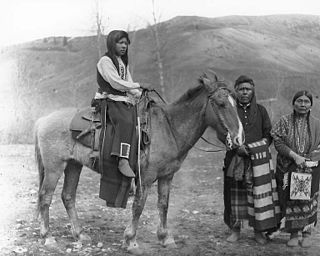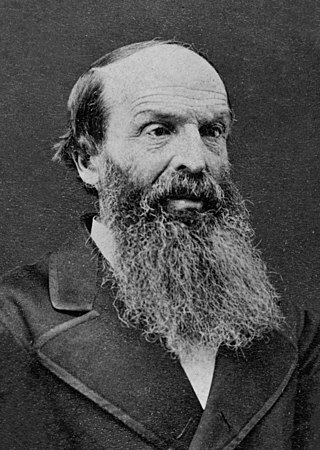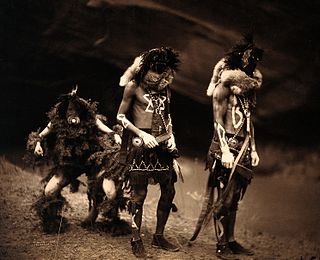Related Research Articles

A medicine man or medicine woman is a traditional healer and spiritual leader who serves a community of Indigenous people of the Americas. Each culture has its own name in its language for spiritual healers and ceremonial leaders.

The Nez Perce are an Indigenous people of the Plateau who still live on a fraction of the lands on the southeastern Columbia River Plateau in the Pacific Northwest. This region has been occupied for at least 11,500 years.

The Nez Perce War was an armed conflict in 1877 in the Western United States that pitted several bands of the Nez Perce tribe of Native Americans and their allies, a small band of the Palouse tribe led by Red Echo (Hahtalekin) and Bald Head, against the United States Army. Fought between June and October, the conflict stemmed from the refusal of several bands of the Nez Perce, dubbed "non-treaty Indians," to give up their ancestral lands in the Pacific Northwest and move to an Indian reservation in Idaho Territory. This forced removal was in violation of the 1855 Treaty of Walla Walla, which granted the tribe 7.5 million acres of their ancestral lands and the right to hunt and fish on lands ceded to the U.S. government.
A vision quest is a rite of passage in some Native American cultures. Individual Indigenous cultures have their own names for their rites of passage. "Vision quest" is an English-language umbrella term, and may not always be accurate or used by the cultures in question.

The Palouse are a Sahaptin tribe recognized in the Treaty of 1855 with the United States along with the Yakama. It was negotiated at the 1855 Walla Walla Council. A variant spelling is Palus. Today they are enrolled in the federally recognized Confederated Tribes and Bands of the Yakama Nation and some are also represented by the Colville Confederated Tribes, the Confederated Tribes of the Umatilla Indian Reservation and Nez Perce Tribe.
The Spokan or Spokane people are a Native American Plateau tribe who inhabit the eastern portion of present-day Washington state and parts of northern Idaho in the United States of America.

Henry Harmon Spalding (1803–1874) and his wife Eliza Hart Spalding (1807–1851) were prominent Presbyterian missionaries and educators working primarily with the Nez Perce in the U.S. Pacific Northwest. The Spaldings and their fellow missionaries were among the earliest Americans to travel across the western plains, through the Rocky Mountains and into the lands of the Pacific Northwest to their religious missions in what would become the states of Idaho and Washington. Their missionary party of five, including Marcus Whitman and his wife Narcissa and William H. Gray, joined with a group of fur traders to create the first wagon train along the Oregon Trail.
Plastic shamans, or plastic medicine people, is a pejorative colloquialism applied to individuals who attempt to pass themselves off as shamans, holy people, or other traditional spiritual leaders, but who have no genuine connection to the traditions or cultures they claim to represent. In some cases, the "plastic shaman" may have some genuine cultural connection, but is seen to be exploiting that knowledge for ego, power, or money.
Since the early 1970s, a legend of Rainbow Warriors has inspired some environmentalists and hippies with a belief that their movement is the fulfillment of a Native American prophecy. Usually the "prophecy" is claimed to be Hopi or Cree. However, this "prophecy" is not Native American at all, but rather from a 1962 Evangelical Christian religious tract, titled Warriors of the Rainbow by William Willoya and Vinson Brown from Naturegraph Publishers. Brown is also the founder and owner of Naturegraph Publishers. Discussing the legend, scholar Michael Niman said, "If anything, it was an attack on Native culture. It was an attempt to evangelize within the Native American community."
Native Americans have been featured in numerous works of children's literature. Some have been authored by non-Indigenous writers, while others have been written or contributed to by Indigenous authors.

Native American religions, Native American faith or American Indian religions are the indigenous spiritual practices of the Indigenous peoples of the Americas. Ceremonial ways can vary widely and are based on the differing histories and beliefs of individual nations, tribes and bands. Early European explorers describe individual Native American tribes and even small bands as each having their own religious practices. Theology may be monotheistic, polytheistic, henotheistic, animistic, shamanistic, pantheistic or any combination thereof, among others. Traditional beliefs are usually passed down in the oral tradition forms of myths, oral histories, stories, allegories, and principles. Nowadays, as scholars note, many American Natives renew their interest in own tradition.
Kay WalkingStick is a Native American landscape artist and a member of the Cherokee Nation. Her later landscape paintings, executed in oil paint on wood panels often include patterns based on Southwest American Indian rugs, pottery, and other artworks.

Traditional gender roles among Native American and First Nations peoples tend to vary greatly by region and community. As with all Pre-Columbian era societies, historical traditions may or may not reflect contemporary attitudes. Gender roles exhibited by Indigenous communities have been transformed in some aspects by Eurocentric, patriarchal norms and the perpetration of systematic oppression. In many communities, these things are not discussed with outsiders.

Two-spirit is a contemporary pan-Indian umbrella term used by some Indigenous North Americans to describe Native people who fulfill a traditional third-gender social role in their communities.

Yellow Wolf or He–Mene Mox Mox was a Nez Perce warrior who fought in the Nez Perce War of 1877. In his old age, he decided to give the war a Native American perspective. From their meeting in 1907 till his death in 1935, Yellow Wolf talked annually to Lucullus Virgil McWhorter, who wrote a book for him, Yellow Wolf: His Own Story. He is notable as one of the few members of the defeated Nez Perce to talk openly to strangers and tell their story to the world.
References
- 1 2 3 Anderson, Lorraine, ed. (2003). Sisters of the Earth: Women's Prose and Poetry About Nature. Vintage Books. p. 385. ISBN 9781400033218.
- ↑ Harvey, Graham; Wallis, Robert J. (December 15, 2015). Historical Dictionary of Shamanism. Rowman & Littlefield. p. 148. ISBN 978-1-4422-5798-6.
- 1 2 Sallquist, Bill (October 29, 1981). "Medicine Woman Blends Treatments". Spokane Daily Chronicle – via Google News.
- ↑ "About Brooke Medicine Eagle". MedicineEagle.com. Archived from the original on October 25, 2014. Retrieved March 20, 2013.
She has ancestors in six native tribes (Crow, Nez Perce, Lakota, Cree, Peigan and Cherokee) as well as European blood from Scotland, Ireland, and Denmark.
- 1 2 Jentz, Paul (March 2, 2018). Seven Myths of Native American History. Hackett Publishing. pp. 159–160. ISBN 978-1-62466-680-3.
- ↑ Dunbar-Ortiz, Roxanne; Gilio-Whitaker, Dina (October 4, 2016). "All the Real Indians Died Off": And 20 Other Myths About Native Americans. Beacon Press. p. 103. ISBN 978-0-8070-6266-1.
- ↑ Grimes, Ronald L. (2002). Deeply Into the Bone: Re-Inventing Rites of Passage. University of California Press. p. 143. ISBN 9780520236752.
- ↑ Snavely, Cynthia A. (2001). "Native American Spirituality: Its Use and Abuse by Anglo-Americans". Journal of Religious & Theological Information . 4 (1): 91–103. doi:10.1300/J112v04n01_08. S2CID 216086951.
- ↑ "An Evening With CocoRosie". DoTheBay . October 28, 2013. Retrieved May 7, 2021.